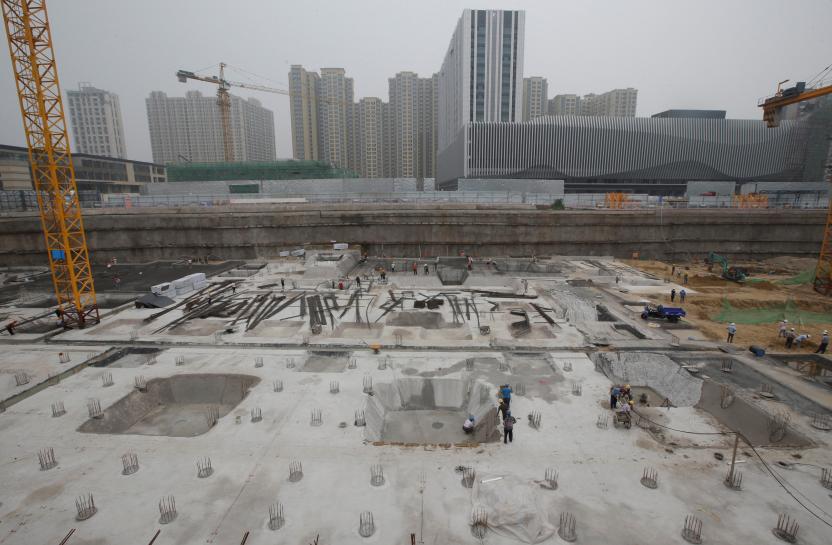
China’s real estate investment growth slowed in July, as official curbs continued to cool an overheated property market, reinforcing expectations of further slowing in second-half 2017.
BEIJING (Reuters) – China’s real estate investment growth slowed in July, as official curbs continued to cool an overheated property market, reinforcing expectations of further slowing in second-half 2017.
New construction starts measured by floor area, a telling indicator of developers’ confidence, contracted for the first time since last September, falling 7 percent in July from a year ago, compared to a 14 percent increase in June.
A rampant property boom that has spread since late 2015 from China’s biggest cities to smaller centers has prompted Chinese authorities to impose a range of measures to deflate the housing bubble as financial risks accumulated. But speculators have instead flocked to China’s less-restricted smaller cities and their massive overhang of unsold houses, which could worry policymakers who want to keep the property market stable ahead of a once-in-five-years Communist Party congress later this year.
The National Bureau of Statistics (NBS) said at a briefing in Beijing that speculative property purchases have been effectively controlled as the overheated property market has cooled somewhat, adding that the housing market should be able to maintain stable growth.
Property investment, which mainly focuses on residential real estate but also includes commercial and office space, saw growth ease to 4.8 percent in July from a year earlier, versus 7.9 percent in June, Reuters calculated from National Bureau of Statistics data.
This retreat appeared to vindicate experts from both the industry and the government who have said that new property investment will continue to slow as regulators rein in unscrupulous lending and speculative buying.
Liu Shijin, a government advisor from a top think tank, said growth in the real estate sector was expected to slow to a new normal of about 2 percent in second-half 2017, adding: “It should not be seen as abnormal if there is no growth or negative growth.”
Real estate investment, which directly affects 40 other business sectors in China, is considered a crucial driver for the economy.
“The residential sector is about to enter a contraction cycle, which is likely to soften investment growth in the second half of the year,” said Tin Sun, head of research at the North China office of CBRE, a property consultancy.
Sales by floor area grew a mere 2 percent in July versus a year ago, the slowest growth since December 2015, and down sharply from a 21.4 percent uptick in June.
Policymakers have prioritized stabilizing an overheated property market ahead of the party reshuffle this year, reiterating the need to avoid dramatic price fluctuations that could threaten the financial system and harm social stability.
Some industry experts have said current government curbs are mostly short-term measures that do not address deep-rooted structural problems. “If those dynamics are not changed, even if home prices could be slowing in the short-term, they would eventually rebound violently,” said Li Tie, director of China’s urban and small towns reform and development center, a government think tank.
But as soaring property prices have made housing affordability a growing problem for policy makers, Chinese officials have been pushing for more initiatives to increase supply in the hottest markets, even though their effectiveness still remains to be seen.
Beijing pioneered the idea in early August that the government will share home-buyers’ ownership for cheaper personal-use only houses, in a bid to make housing more affordable and to further stabilize the real estate market.
Inventory of finished homes – which is usually smaller than private estimates – continued to fall. Inventory floor area in the first seven months shrunk by 11 percent, compared to a fall of 9.6 percent in the January-to-June period.
(The story corrects 2018 in opening paragraph to 2017)
 0 comments
0 comments





